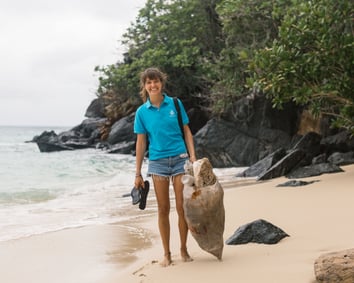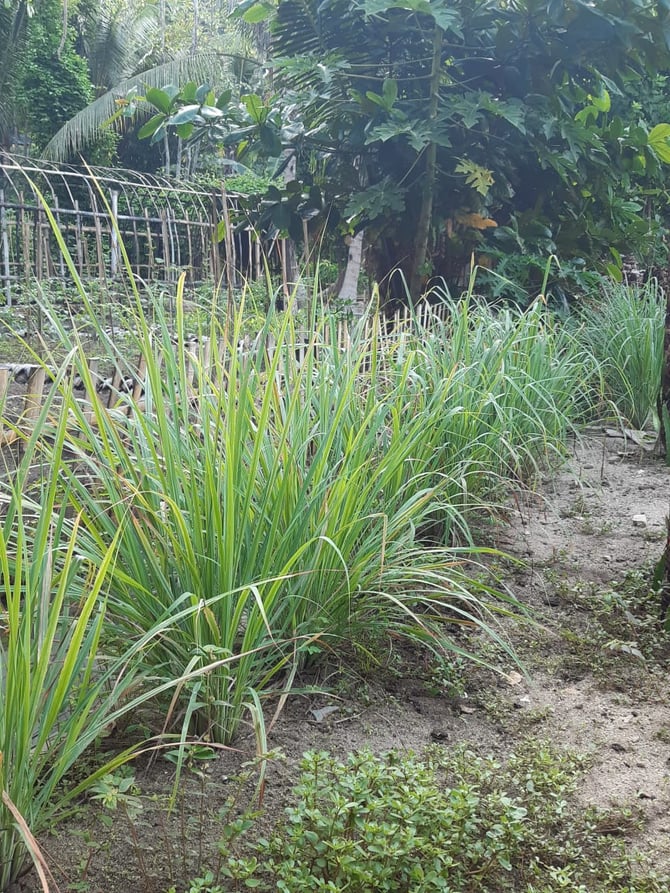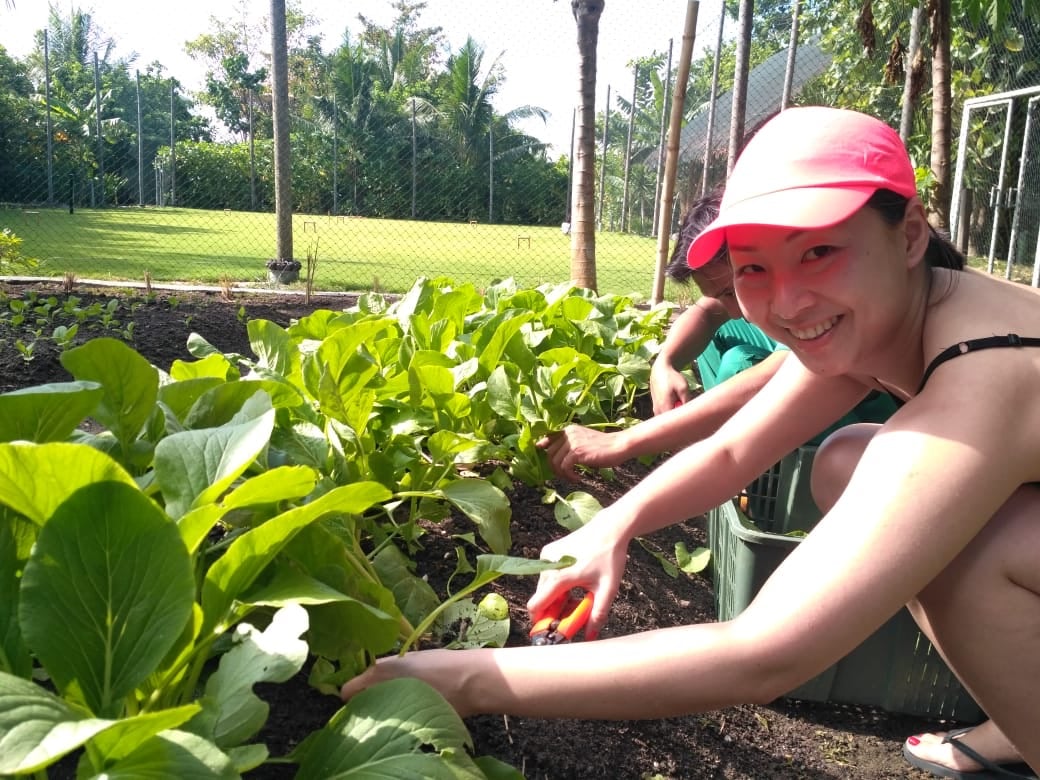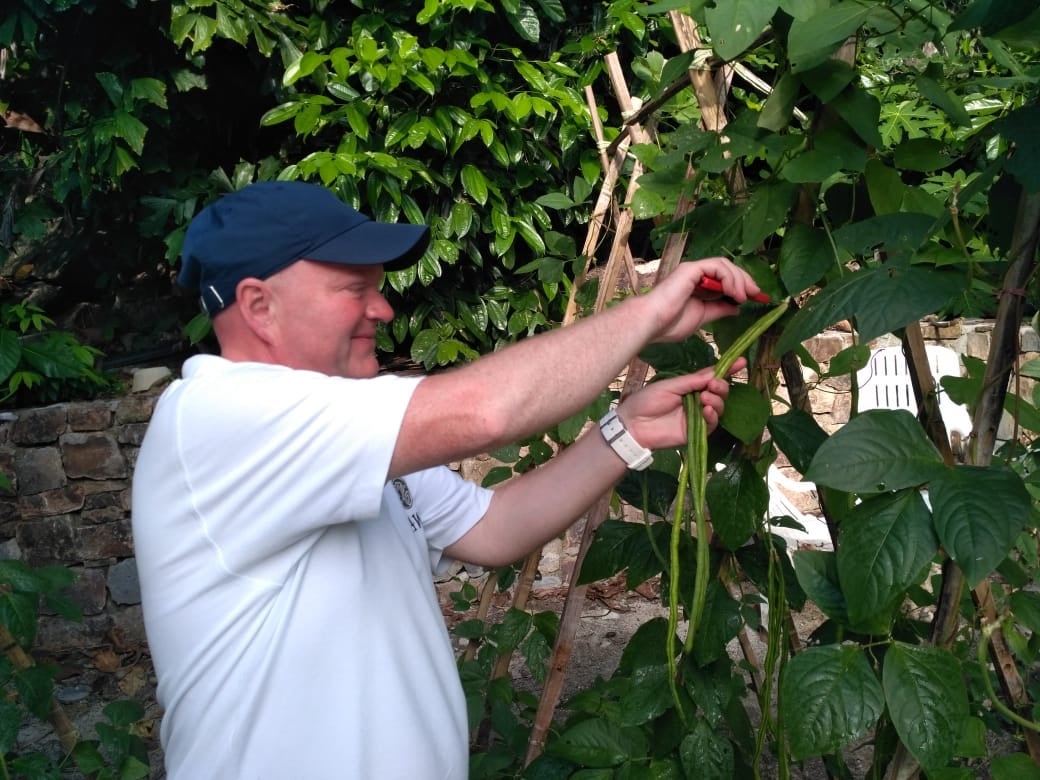An all-inclusive experience, redefined…At Bawah Reserve in Indonesia’s pristine Anambas...
Begin your day at Bawah Reserve with your choice from our Juice Butler service: fresh...
If you’ve noticed the beautifully patterned fabrics in your villa, you’ve already...
Ready to make a splash?For guests who are both swimming-fit and up for a challenge,...
Welcome to the thermal contrast therapy facility at Aura Sanctuary at Bawah Reserve,...
Planning your dream private island holiday in Indonesia? Here at Bawah Reserve, we...
3 ways to repost or use our Instagram Reels
We love that you want to share a little...
2024 wellness trends were exciting for sure, but it keeps getting better! The top...
A new subtle yet powerful trend - that of being “demure” and “mindful” - has been...
When we think of bees, honeybees often come to mind. However, at Bawah Reserve, a...
In the heart of Southeast Asia lies a hidden gem that promises a retreat into nature,...
It’s safe to say that if you ask someone to name a tropical island destination, they will...
As we step into 2024, the world of well-being is teeming with transformative trends that...
2 years ago for Earth Day 2022, we created 10 sincere pledges for investing in the planet...
Starting to plan your dream wedding? Some couples have a clear idea of their perfect...
We are often asked about the best time of year to schedule a trip to Bawah Reserve.Which...
Our faraway paradise is well worth the journey and there are many ways to get to Bawah,...

Meet Eva Giraldo Maria, Bawah Reserve’s Sustainability Manager.

"Wondering if Bawah is really all that sustainable? Bawah Reserve is not only a magical place where you can reconnect to nature, it is also where you can be a part of it. Our islands are equipped with permaculture gardens and sustainability areas, and we are happy to pull back the curtain to show you our efforts and let you join in too." Eva Giraldo Maria.
The permaculture garden walk is a real highlight for Bawah guests. Going deeper into our gardens, you can discover how we grow our own seeds (and how many different local seeds we have in our seed bank), how the team propagates different species to reforest the island, and how we create our own compost and fertilisers. You’ll also learn the secrets of some of our local plants and the many ways they can be used, from medicines and mood enhancers to tasty condiments and antiseptics.
Not everything is about the sun and beautiful beaches at Bawah. If you want, you can immerse yourself in a meaningful experience planting and harvesting vegetables in our organic gardens.
All guests are more than welcome to join us in this delicate task. We plant, grow and harvest our own vegetables, fruits, herbs, spices and medicinal plants. And, we grow our own aloe vera, ginger and tamarind to prepare delicious drinks which double as healthy, natural remedies.
With help from our team, you can plant some of these ingredients or learn how to harvest everyday staples such as lettuce, chilis, tomatoes or bok choy. We cannot imagine a better way to discover how fresh, crunchy and colourful these vegetables are then picking them ripe from the vine. Then you can use them in a traditional cooking class or private dinner, whichever you prefer. While working alongside our lovely staff, you can hear in their own words how they feel about helping to preserve the Anambas Islands and Indonesia as a whole.
Here are 10 of the most delicious things currently growing in our gardens. Plus some interesting facts we bet you never knew about these top Indonesian vegetables, herbs and spices............
Ginger is a popular component in Indonesian cooking and is often grated or cut into small
pieces and added to dishes like rendang and curries. It has a strong flavour and a distinctive
smell. It’s also great steeped in hot water with a squeeze of lemon as a comforting, healthy
drink.
ginger is actually a rhizome, not a root. Rhizome are underground stems that
grow horizontally. Roots, on the other hand, grow into the soil vertically to anchor a plant in
place.
Often mistaken for ginger since the two look alike, the two rhizomes can’t always be used
interchangeably as they have different tastes. While ginger is spicy and pungent, galangal has
a more citrusy, earthy flavour. The skin is lighter in color than ginger and the insides are
harder, so you can’t grate it.
To add to the confusion, galangal is also called Chinese ginger and Thai
ginger. Watch out for these terms when you’re cooking Asian food.

Many Indonesian dishes have a spicy kick due to the addition of fresh or dried red chilli.
Mild dishes are often served with red chilli sambal (RECIPE HERE) on the side.
With a fabulously fiery colour, the general rule with chillies is that the smaller they are, the
hotter the flavour. Bawah Reserve’s chilis are small, so consider yourself forewarned.
Chillies are natural painkillers as they trigger the brain to produce pain-
relieving endorphins.

An important part of Indonesian cooking, lemongrass grows in long stalks and has an
invigoratingly, lemony fragrance. To use lemongrass in cooking, you need to trim the top and
base of the stalk, then peel off the tough outer layers before finely chopping or mincing the
inner core. Alternatively, stalks can be placed whole in a dish and removed before serving.
Lemongrass can be used to repel mosquitos and attract honey bees, making it
perfect for Bawah’s permaculture gardens.
The entire coriander plant is edible but it’s the fresh leaves that are used the most in
Indonesian cooking. Don’t throw out the stems though; they are great for making curry
pastes.
Coriander can relieve digestive problems and can help regulate blood sugar
levels in people who have diabetes.

Also known as water spinach, kangkung is loved throughout Asia for its crunchy stem and
long green leaves. It grows quickly and easily in most types of soil. Similar to spinach, you
need to use quite a lot as it shrinks down when cooked. Full of minerals, such as potassium,
iron and magnesium, this vegetable is a great addition to stir fries and dishes like gado gado.
Kangkung is listed as a "Federal Noxious Weed" under the US Department
of Agriculture's Plant Protection Act as it can be a nuisance to aquatic species.

Offering a unique flavour and texture, red okra has a taste that is similar to aubergine
(eggplant). When cooked, it turns green and takes on a stickier texture. Sambal okra is a
popular dish, as the finger-like vegetable is delicious when fried with garlic, chili and shrimp.
Red okra tastes exactly like green okra; the only difference is the colour.

Local pumpkins grow well in Bawah’s warm climate and, despite their weight, they grow
high up on the plant’s vines. With an orange flesh and a sweet flavour, they are a great
addition to an Indonesian curry or soup with coconut milk and chilli.
The name pumpkin comes from the Greek word “pepon”, meaning large melon.

Long beans grow very quickly in warm climates and are a versatile addition to any kitchen.
Edible both when fresh and cooked, this vegetable is also known as a yard long bean or snake
bean due to its long, slender size. Long beans stir fried with tempeh is a common local dish.
Long beans can grow up to thirty inches in length, although they have more
flavour if you harvest them around half this size.
In Southeast Asia, the cucumbers are shorter and thicker than many of the Western varieties. They are often crossed with different types of melons -making them slightly sweeter. They almost look like a marrow!
Cucumber is commonly known as a vegetable because of how it's eaten. However, it grows from flowers and contains seeds, so botanically it is classified as a fruit.
Our aim is for the permaculture gardens to supply 60% of all the fresh supplies for the kitchens. We are well on track for this and you can find all of the above on the menus daily.
Bawah Reserve isn’t a resort that just talks about giving back to the planet. We show you – and involve you – in every step of our journey. It’s easy to get involved. Just let us know your interests, and we will arrange a personalised itinerary to show you whichever area you are interested in.
An all-inclusive experience, redefined…At Bawah Reserve in Indonesia’s pristine Anambas...
Begin your day at Bawah Reserve with your choice from our Juice Butler service: fresh...
If you’ve noticed the beautifully patterned fabrics in your villa, you’ve already...
Ready to make a splash?For guests who are both swimming-fit and up for a challenge,...
Welcome to the thermal contrast therapy facility at Aura Sanctuary at Bawah Reserve,...
Planning your dream private island holiday in Indonesia? Here at Bawah Reserve, we...
3 ways to repost or use our Instagram Reels
We love that you want to share a little...
2024 wellness trends were exciting for sure, but it keeps getting better! The top...
A new subtle yet powerful trend - that of being “demure” and “mindful” - has been...
When we think of bees, honeybees often come to mind. However, at Bawah Reserve, a...
In the heart of Southeast Asia lies a hidden gem that promises a retreat into nature,...
It’s safe to say that if you ask someone to name a tropical island destination, they will...
As we step into 2024, the world of well-being is teeming with transformative trends that...
2 years ago for Earth Day 2022, we created 10 sincere pledges for investing in the planet...
Starting to plan your dream wedding? Some couples have a clear idea of their perfect...
We are often asked about the best time of year to schedule a trip to Bawah Reserve.Which...
Our faraway paradise is well worth the journey and there are many ways to get to Bawah,...
© Bawah Reserve 2024. Anambas. Riau Islands. Indonesia
leave a comment